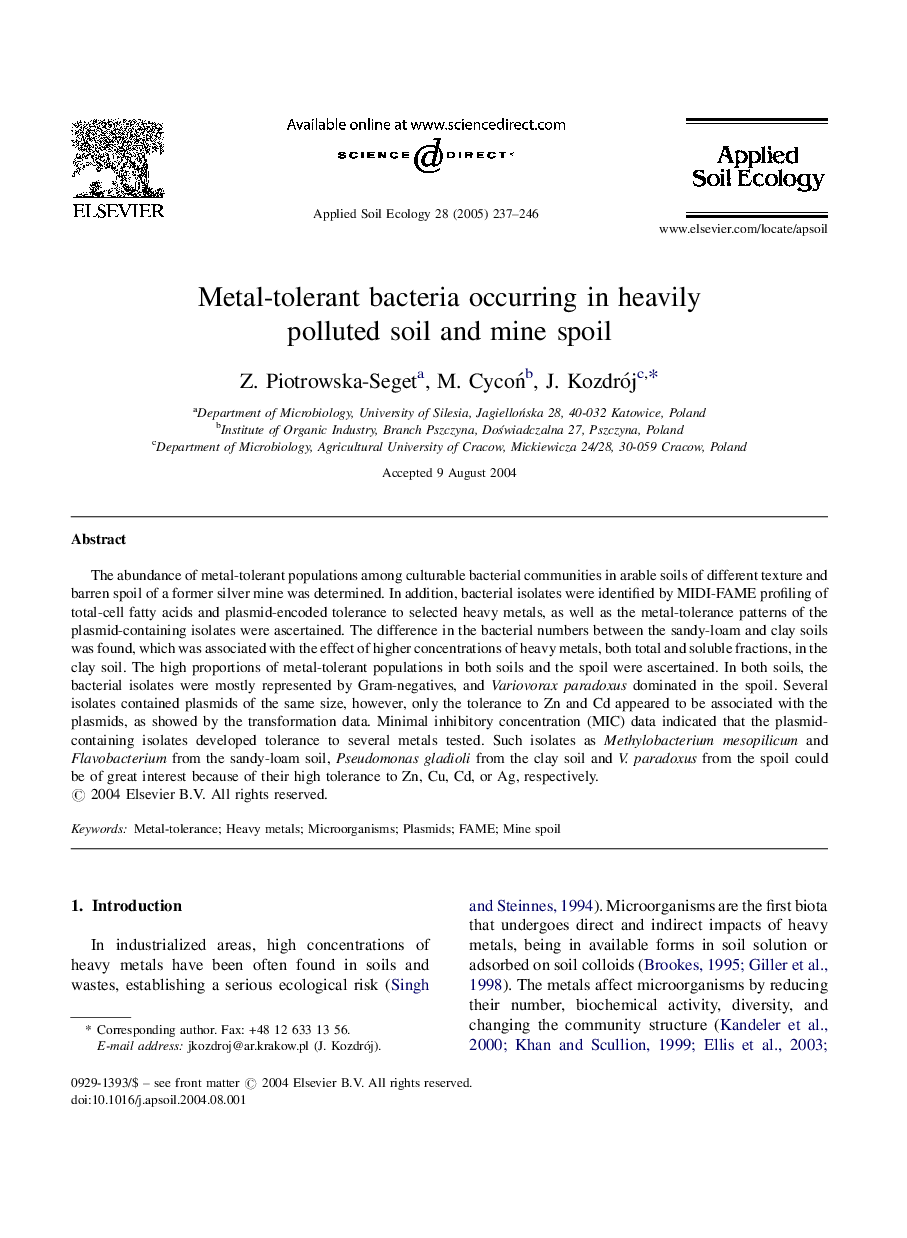| Article ID | Journal | Published Year | Pages | File Type |
|---|---|---|---|---|
| 9445253 | Applied Soil Ecology | 2005 | 10 Pages |
Abstract
The abundance of metal-tolerant populations among culturable bacterial communities in arable soils of different texture and barren spoil of a former silver mine was determined. In addition, bacterial isolates were identified by MIDI-FAME profiling of total-cell fatty acids and plasmid-encoded tolerance to selected heavy metals, as well as the metal-tolerance patterns of the plasmid-containing isolates were ascertained. The difference in the bacterial numbers between the sandy-loam and clay soils was found, which was associated with the effect of higher concentrations of heavy metals, both total and soluble fractions, in the clay soil. The high proportions of metal-tolerant populations in both soils and the spoil were ascertained. In both soils, the bacterial isolates were mostly represented by Gram-negatives, and Variovorax paradoxus dominated in the spoil. Several isolates contained plasmids of the same size, however, only the tolerance to Zn and Cd appeared to be associated with the plasmids, as showed by the transformation data. Minimal inhibitory concentration (MIC) data indicated that the plasmid-containing isolates developed tolerance to several metals tested. Such isolates as Methylobacterium mesopilicum and Flavobacterium from the sandy-loam soil, Pseudomonas gladioli from the clay soil and V. paradoxus from the spoil could be of great interest because of their high tolerance to Zn, Cu, Cd, or Ag, respectively.
Related Topics
Life Sciences
Agricultural and Biological Sciences
Ecology, Evolution, Behavior and Systematics
Authors
Z. Piotrowska-Seget, M. CycoÅ, J. Kozdrój,
